Nepal faces a severe road safety crisis, with thousands of accidents and fatalities annually due to poor infrastructure, insufficient traffic police, and rampant disregard for traffic rules, necessitating urgent investment in technology, infrastructure, and public awareness to meet the UN's 2030 safety targets.
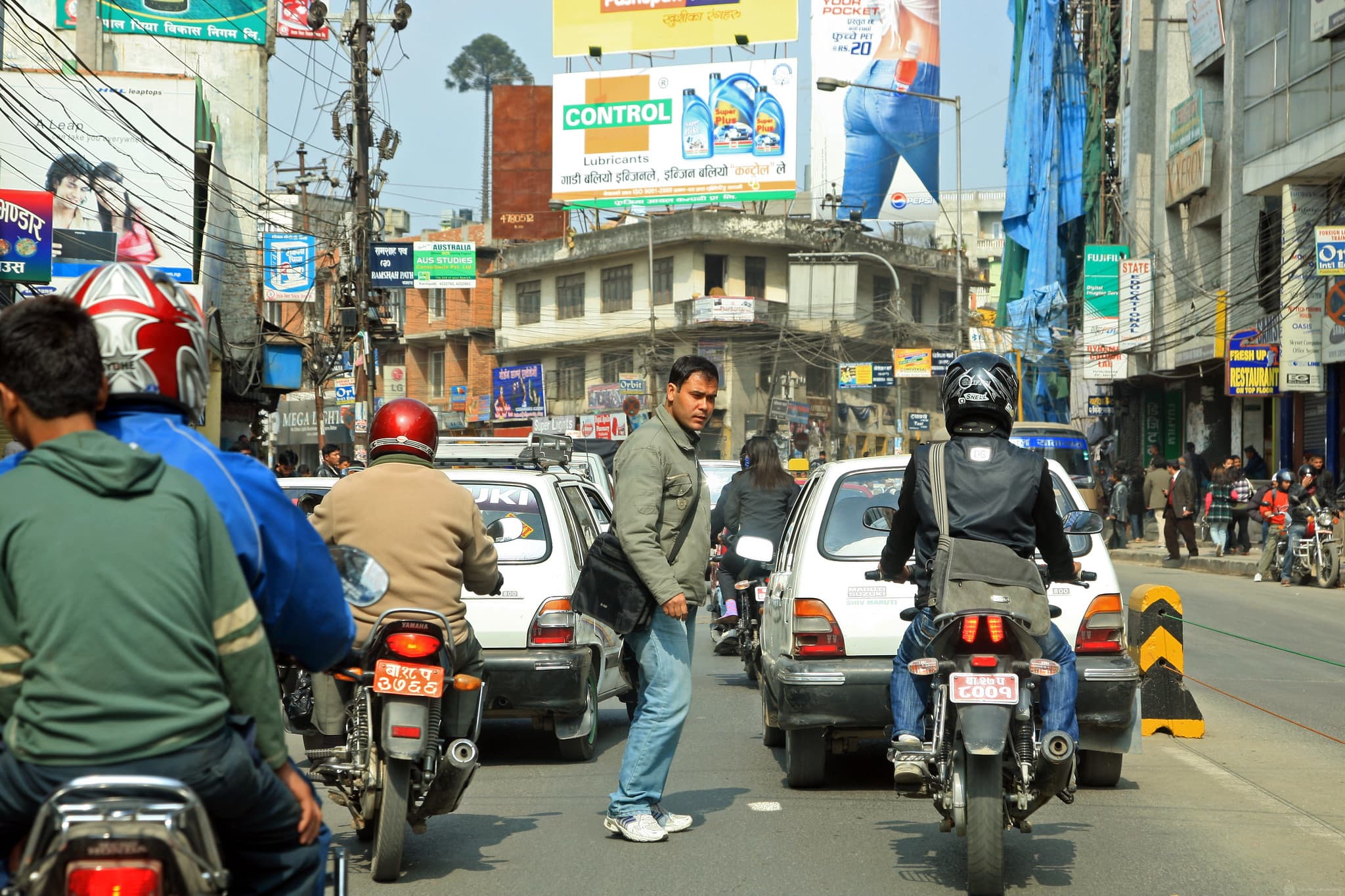
June 16, 2025
Kathmandu, Nepal

Road accident in Nepal
Photo: Wikimedia Commons/ Laxman Thapa
Globally, approximately 1.29 million lives are at stake each year, attributed to road traffic accidents. According to the Global Status Report on Road Safety 2023, road injuries are among the leading causes of death, especially in children and young people aged 5–29 years.
The World Health Organization (WHO) projects road traffic accidents to be the fifth leading cause of death by the year 2030. The United Nations General Assembly aims to cut down the number of deaths and injuries from road traffic crashes by half by 2030. This calls for serious attention and investment in road safety, and it is true for Nepal too.
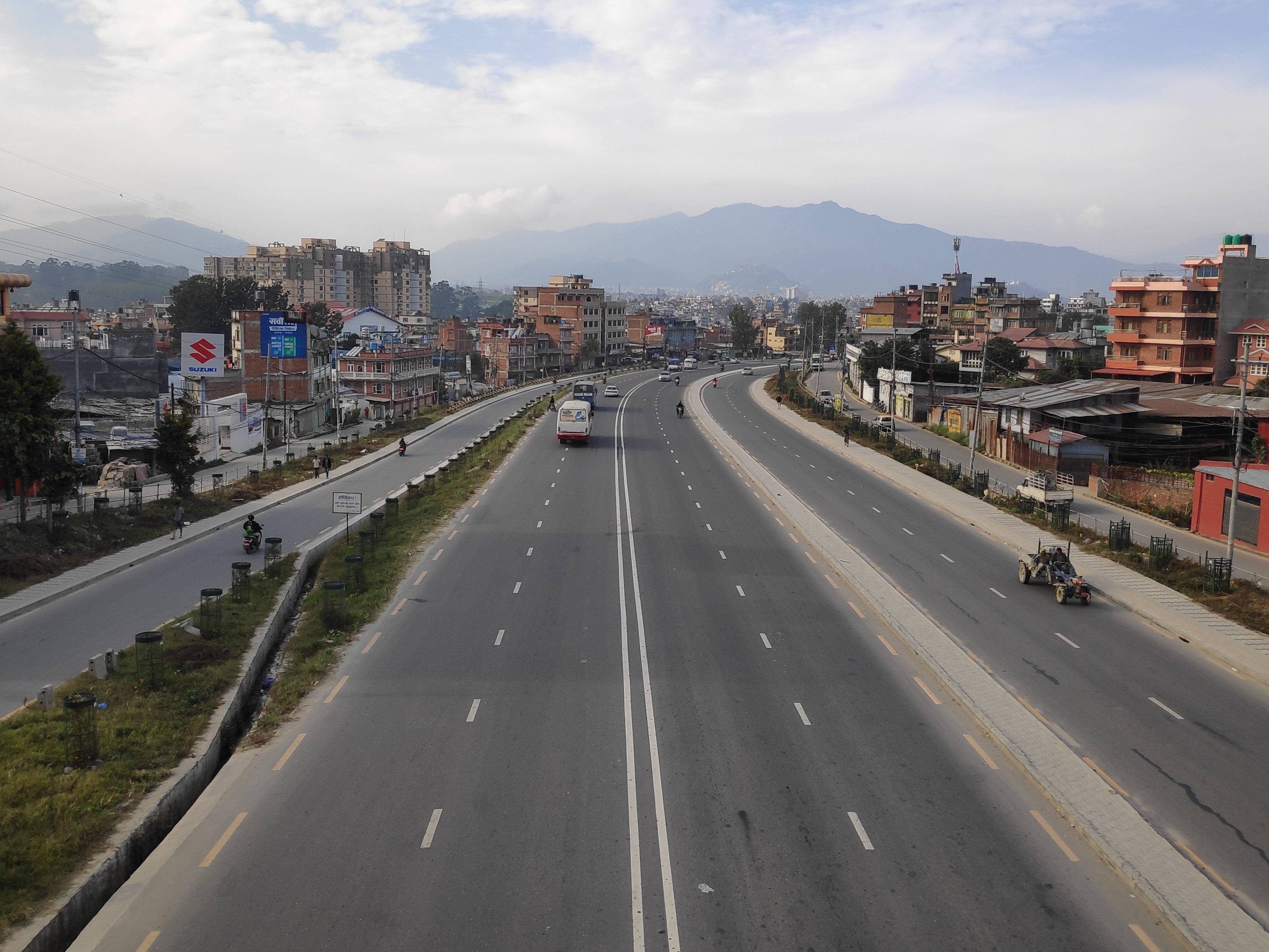
In Nepal, roadways are the most commonly used means of travel. But it is also one of the most dangerous ones–people travel miles with their lives on the line.
Data from the Nepal Police reveals that during the fiscal year 2022/23 alone, there were 5,960 reported road accidents, many of which resulted in fatalities. According to Gopi Krishna Subedi, Deputy Superintendent of Police at Nepal Police Highway Safety and Traffic Management Office (Kaski), “In 2081, there were a total of 389 road accidents. There were 255 minor injuries, 284 major injuries, and 206 deaths.”
Subedi added, "In Baisakh 2082 alone, there were a total of 22 road accidents in the district, with 16 deaths. The highest number of accidents was found in motorcycle riders (15/22 cases)".
Meanwhile, similar data were shared by the Bagmati State Traffic Police Office Ramnagar (Chitwan). The Office said that, on average, there are about seven major or minor road accidents daily. In the current fiscal year 2081/82, the collected data so far has shown there were a total of 1,353 motorbike accidents, 397 four-wheel accidents, 102 three-wheeler accidents, and 273 pedestrian accidents.
Given the frequency of accidents, the inadequate road safety infrastructure of Nepal doesn’t provide any ray of hope. Out of approximately 100,000 kilometers (kms) of roads across the country, only about 25,000 kms meet acceptable safety standards.
"The total road length of Gandaki province is 11,162.65 km, of which only 1,876.74 km is paved, while 1,221.27 km is graveled and 8,064.64 km is bumpy," Subedi noted. The situation is not that different in other parts of Nepal either.
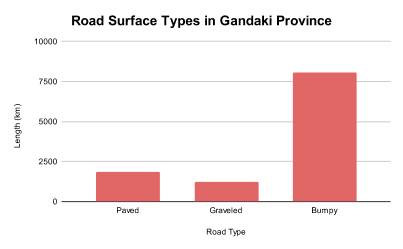
Bar graph illustrating the distribution of road surface types in Gandaki Province
Photo: DevPulse/ Abhiyan Dahal
Bagmati State Traffic Police Office Ramnagar, Chitwan, stated that the total road length of Bagmati province (excluding Kathmandu valley) is 14,456.9 km, of which only 5,097.9 km is black-topped while 2,068 km is graveled, and 7,291 km is unmetalled.
Dan Bahadur Thapa, Superintendent of Police at Nepal Police Highway Safety and Traffic Management Office (Kaski), mentioned that road safety is actually a very critical subject and not only in case of Nepal, but globally most of the road accidents occur due to carelessness of driver as there is lack of compliance with traffic rules.
According to the Bagmati State Traffic Police Office Ramnagar (Chitwan), it is seen that youths, mostly 26-40 years old, are in motorbike accidents because they overspeed, do not follow traffic rules, drink and get intoxicated, and drive and don’t seem to give value to their own lives. In Baisakh 2082 alone, there were a total of 234 road accidents, 514 people were injured, and 24 people died. Thapa observes that driving responsibly can make a difference.
Thapa also adds that public vehicle drivers also seem ignorant about the knowledge of road safety and vehicle capacity, and are commonly seen overloading the buses with passengers and goods, thus leading to road accidents. Thapa stresses the need for a technological traffic management scheme, as traffic being physically present is not enough, and the condition doesn't seem to get any better anytime soon.
Subedi agreed on the need to optimize the use of existing infrastructures, decrease the volume of vehicles on the road, and focus on road maintenance and technological interventions, as preventing road accidents is always better than coping with their aftermath.
Another reason why road safety has been compromised is the number of personnel in traffic police departments across the nation. Currently, the ratio of traffic police to vehicles in Bagmati Province (excluding the valley) is 1:170. Whereas, as per Subedi, the total number of traffic police is 416. The vehicle-to-traffic police ratio is 843:1 in Gandaki province.
The high ratio difference in two of the busiest provinces in Nepal gives a sad picture. Each traffic police officer manages an average of 26.83 km of road with vehicles plying the roads heavily. Thus, depending only on the physical traffic police is not wise and not effective.
DSP Subedi mentioned the lack of trained manpower and equipment for the pre-hospital trauma care on the scene. To minimize the deaths on the road, Subedi insisted on the importance of first aid training for the traffic police to equip them with the skill to provide immediate medical assistance to the injured ones, as they are the first official response at the scene.
But this addition, without the addition of a number of traffic police officers on duty, will only overburden the existing number of staff, already struggling to deal with traffic management.
As this is not something only proactive programs can solve, the participation of the drivers is equally important. To minimize road accidents, various awareness-raising activities have been conducted in coordination with different government bodies, semi-government bodies, the private sector, and transport entrepreneurs, with relevant concerned bodies. Education and Enforcement work have been taken together to maintain road discipline.
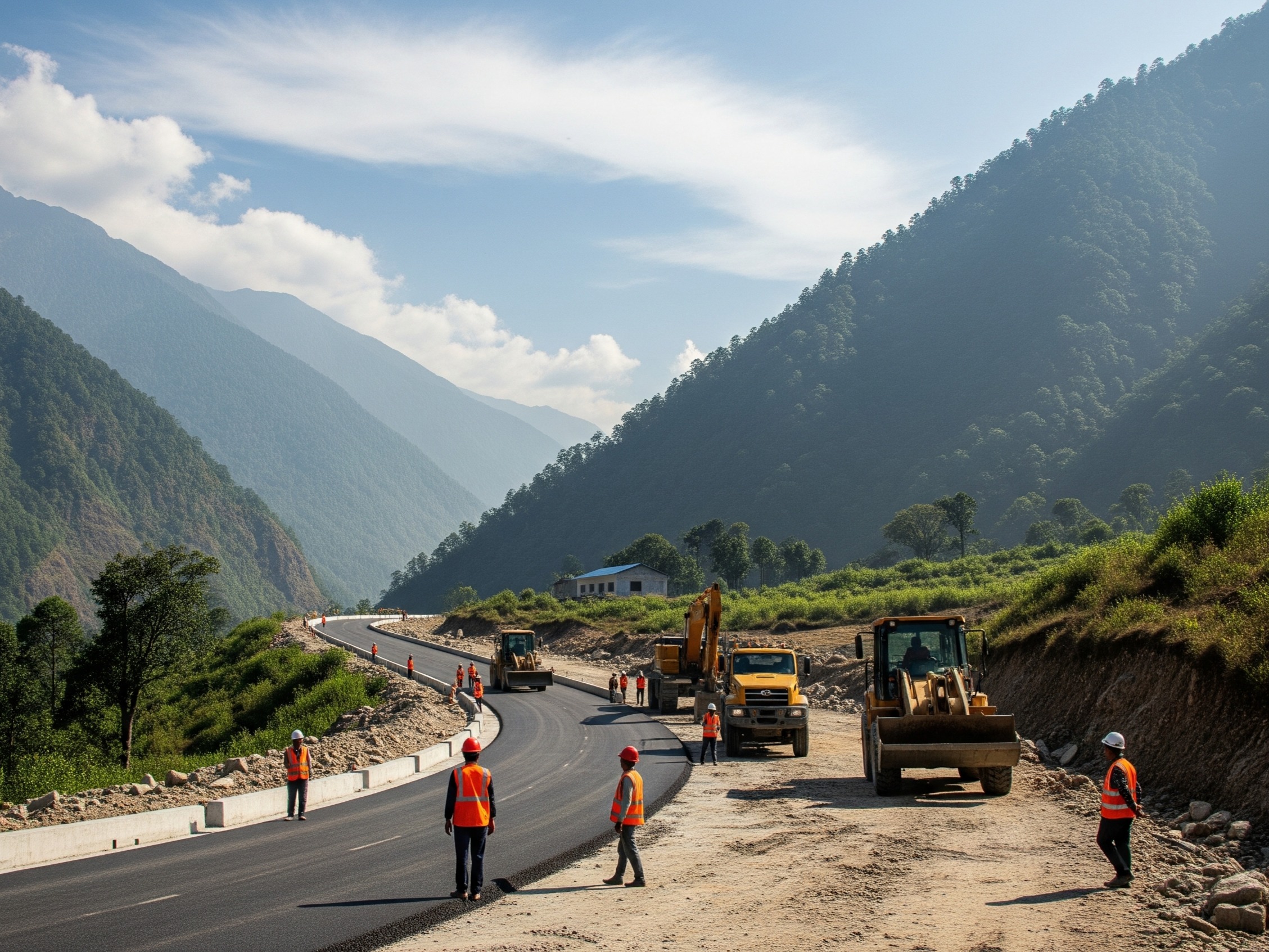
AI-generated representational image of building safe roads in Nepal
Photo: Gemini AI
According to Bagmati State Traffic Police Office Ramnagar (Chitwan), initiatives like various passenger-friendly services to vehicle drivers and conductors, like safe driving (training?) and mechanical testing of vehicles, driver's health check-ups, and traffic awareness raising programs can increase traffic awareness among every citizen, maintain road discipline, and make road travel safe and reliable.
To educate the individuals, following the concept of one school-one traffic teacher, arrangements have been made to conduct classes on traffic rules in each school by providing training on traffic rules to one teacher each from the community and private schools.
Meanwhile, refresh centers have been established on highways. Modern CCTV cameras have been installed on the roads. These actions have had a positive impact on reducing road accidents", Bagmati State Traffic Police Office Ramnagar, Chitwan explained.
In 2022, a proactive step towards saving lives was taken by Balendra Shah, Mayor of Kathmandu Metropolitan City (KMC), as he announced an infrastructure ambulance in Kathmandu to address the reconstruction of potholes and cracked roads. But sadly, this initiative has not been active in today’s time.
According to Jagat Man Shrestha, Traffic expert Adviser at Kathmandu Metropolitan City, "The physical infrastructure ambulance will run very smoothly from 2082." Meanwhile, he added, KMC is setting up its asphalt plant to improve the performance of road repair teams and ensure potholes are properly filled.
The frightening state of road safety in Nepal is a crisis that demands urgent, coordinated, and sustained action. Thousands of lives are at stake due to road traffic accidents. The intensity of the problem far outweighs the efforts from traffic police departments, local governments, and various awareness initiatives.
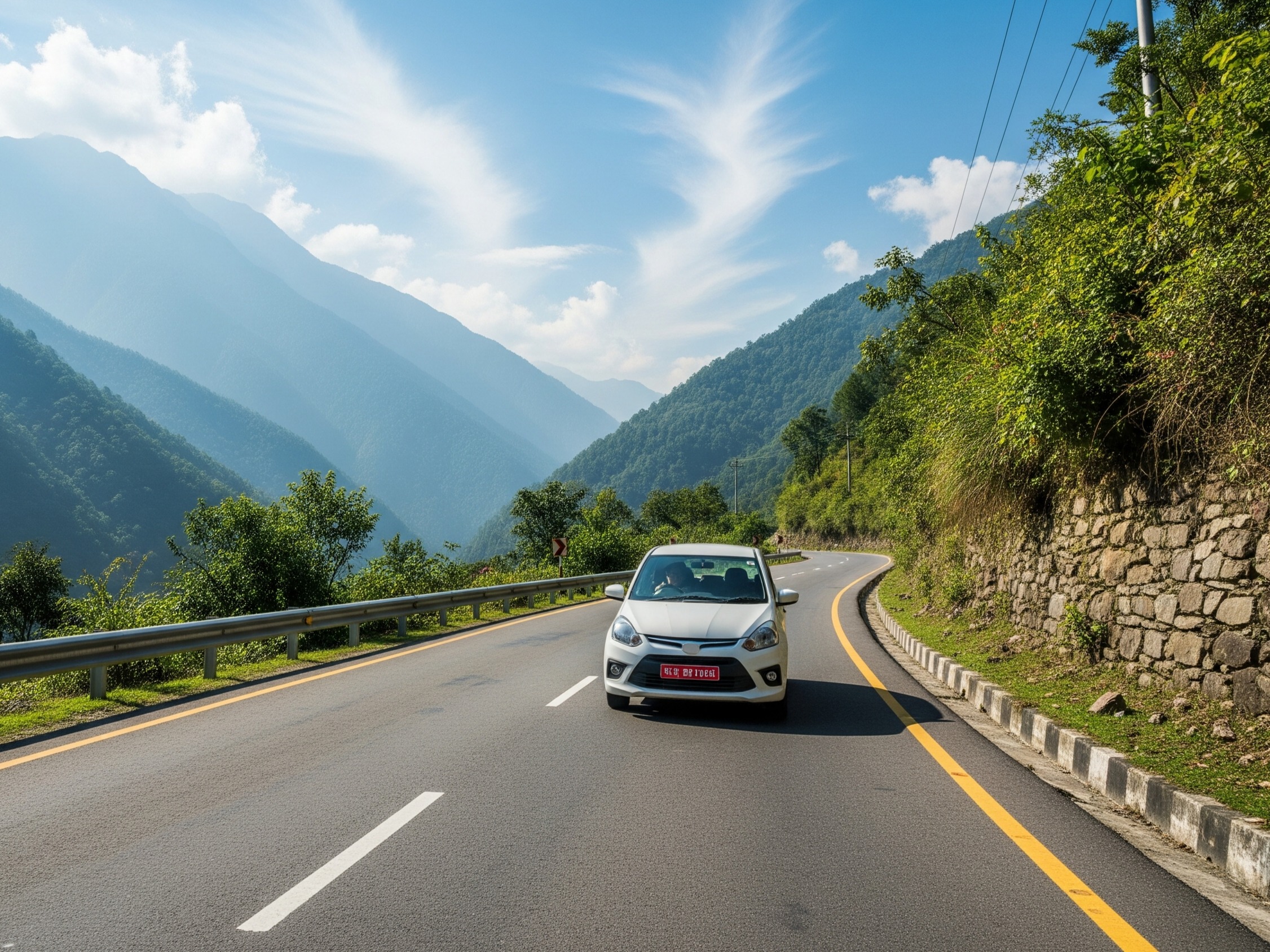
AI-generated representational image of safe roads in Nepal
Photo: Gemini AI
Investment in modern traffic management systems and comprehensive road maintenance is vital, along with the role of every individual—drivers, pedestrians, policymakers, and educators. The goal of halving road traffic deaths and injuries by 2030, as envisioned by the United Nations, is achievable only if Nepal acts with urgency and sagacity. Road safety is the bare minimum for more lives not to be lost.

By sharing valuable information and sparking inspiration, we aim to foster growth, innovation and brighter opportunities for future generations.
Contact us